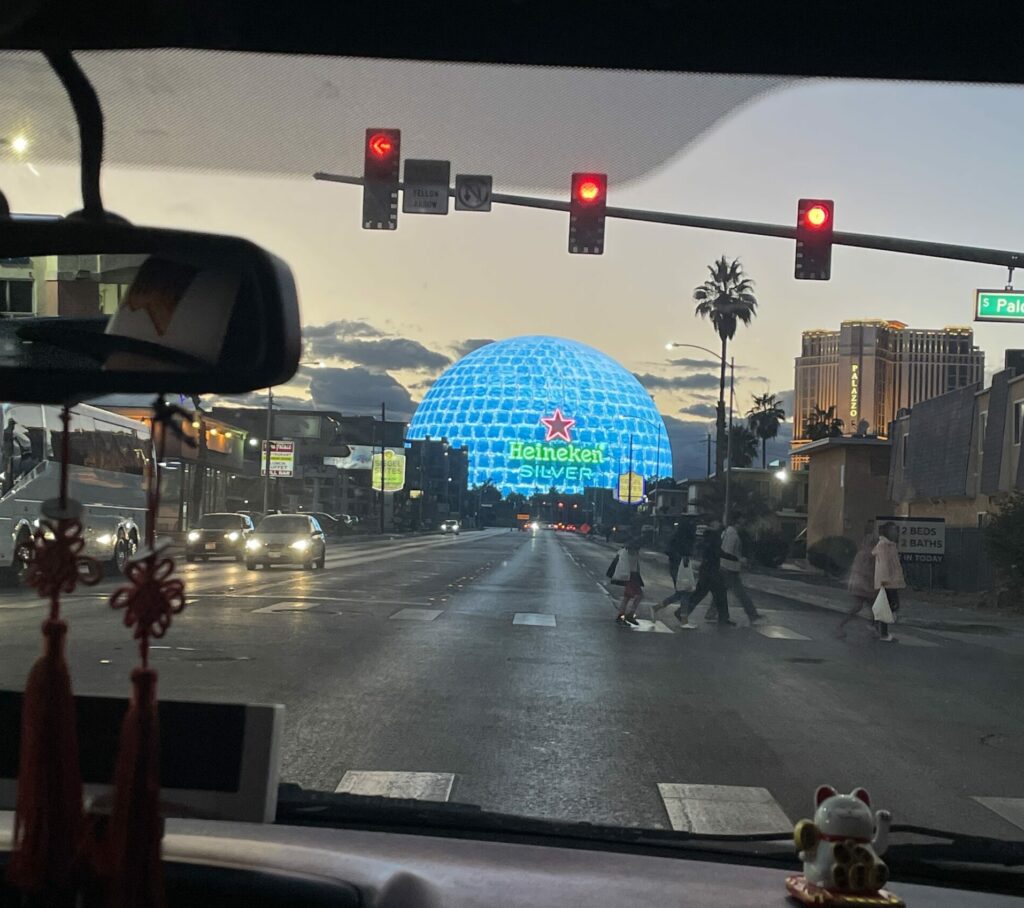Photograph by Elena Saavedra Buckley.
Once when I was about twelve I was walking down the dead-end road in Albuquerque where I grew up, around twilight with a friend. Far beyond the end of the road was a mountain range, and at that time of evening it flattened into a matte indigo wash, like a mural. While kicking down the asphalt we saw a small bright light appear at the top of the peaks, near where we knew radio towers to occasionally emit flashes of red. But this glare, blinding and colorless, grew at an alarming rate. It looked like a single floodlight and then a tight swarm beginning to leak over the edge of the summit. My friend and I became frightened, and as the light poured from the crest, our murmurs turned into screams. We stood there, clutching our heads, screaming. I knew this was the thing that was going to come and get me. It was finally going to show me the horrifying wiring that lay just behind the visible universe and that was inside of me too. And then, a couple seconds later, when we realized the light was only the shining moon rising over the peaks, we began laughing so hard that my parents heard and stumbled out into the front yard.
I thought of this memory a few weeks ago while in a Lyft in Las Vegas, also at twilight. A man named June was driving me to the Sphere, the giant 20,000-capacity arena built just off the Strip by the Madison Square Garden Company and designed by the firm Populous, which opened earlier in the fall. The Sphere is (mostly) its titular shape, 157 meters wide, and covered in what is reputedly the largest LED screen on earth, and inside is a smaller sphere, holding a lobby and an arena with a curved screen that bears down at and envelopes the audience, a massive take on a planetarium with 4D features. The globular animations on the outer surface are what first captivated the attention of online viewers; since the Sphere turned on, it has featured rotating basketballs, mercurial ripples, AI-generated washes of color, and advertisements that cost brands nearly half a million dollars per day to display. Its most iconic exterior images are all the kinds of things middle schoolers like to draw in the margins of their notebooks: an eyeball, an emoji face, and, yes, the moon.
I first latched on to the Sphere in mid-2021, when architectural renderings had already been circulating for a few years. During the 2022 midterms, while election forecasters were waiting for late-breaking votes from Clark County, Nevada, where Las Vegas is the county seat, I remember thinking that the Sphere would be the right place on which to beam the same consequential results in the future. If the electoral college was always going to turn random populations into oracles, why not enhance the effect and ground the abstraction with the most cosmic of shapes? At that point, the structure was still a giant salad bowl of curved steel beams just off the Strip; Madison Square Garden had been building the thing since 2018, and inflation had pushed the projected cost to $2.2 billion, nearly double the original budget. By September of this year they finished it, and U2 started its forty-show residency. I booked a trip to Vegas and bought a ticket to Postcard from Earth, the Darren Aronofsky “movie” that had been made for the venue. (Cheaper than Bono’s show.) It was all I could think about for weeks.
Then I began having dreams that punished me for my enthusiasm. In them the Sphere was a pathetic size, the circumference of a backyard trampoline, languishing in roadside parking lots like a sheepish dumpster with a vending machine’s tepid glow. People whizzed past it in their cars as they would highway billboards for personal injury lawyers. And I guess that was the outcome I was afraid of. For me, the question of the Sphere was not really about the subjects that other journalists had focused on—the state of live entertainment, or what screens do to our attention spans—but about whether a physical object could still truly excite us, siphon and sustain our normally starved collective passions. (For the majority of human history, this type of adulation was mostly aimed at entities that were sacred, cosmic, or both, like comets.) That the Sphere was owned and operated by sterilized companies didn’t really matter to me; perhaps this increased the effect of the thing as a smooth, vacuous singularity of the masses. Once I got there, and once I went inside it, would the energy I had generated thinking about it have anywhere to land? I was hoping—and this might have been the optimism that the Sphere was brazenly promoting at a time when everyone seemed to be shorting it—that if you tore away all the facts about its content, you would still be left with what moved me against all odds: the shape, and the light.








